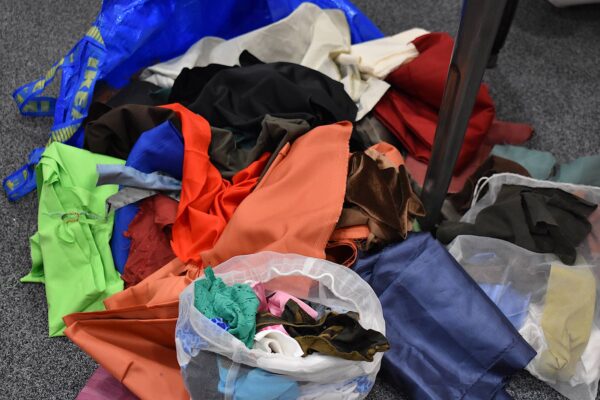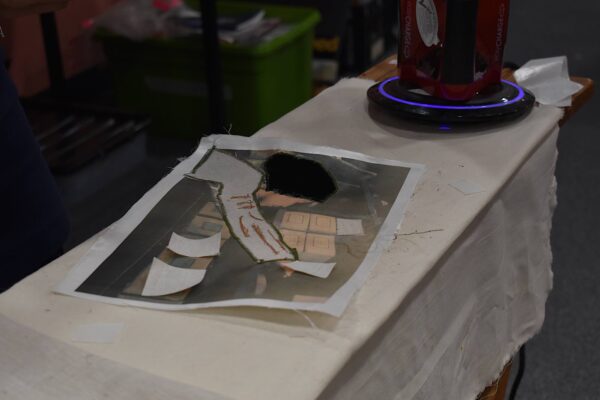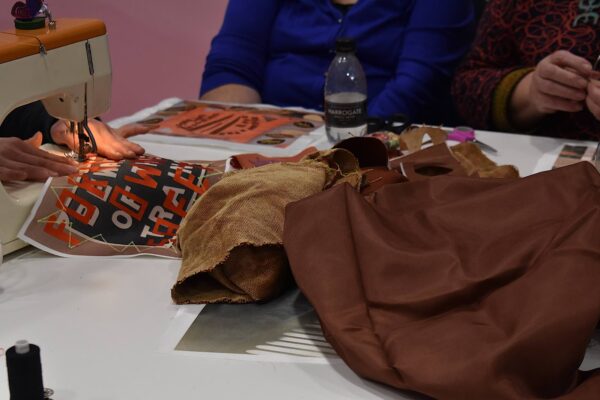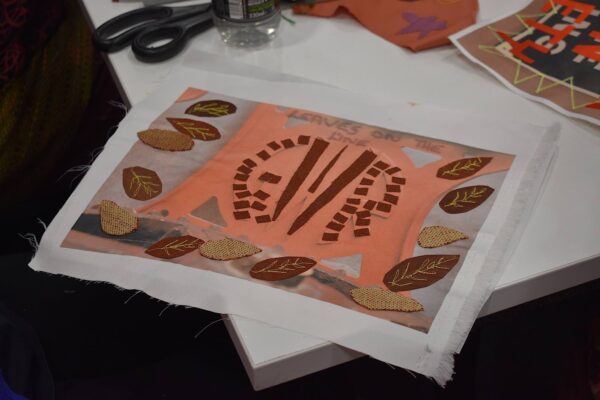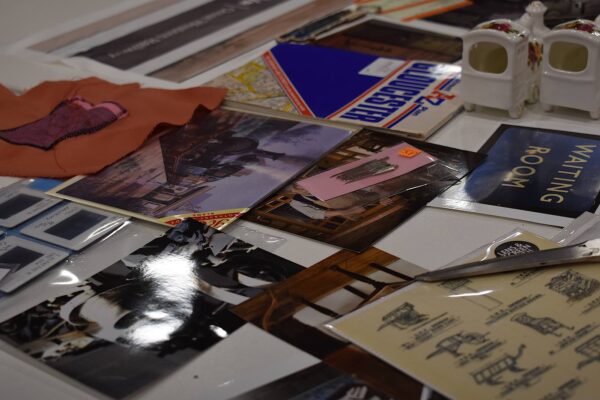
The Great Train Tapestry is taking shape as we continue through our series of textile workshops facilitated by local artists.
An appliqué workshop concluded our open access sessions in 2023…
This workshop took place in December and was delivered by Katie Taylor. Katie is a freelance costumier, who specialises in historical period tailoring, creature costumes, prop making, SFX and breakdown art. In 2023 she took on some of her first design jobs: short film ‘Benji’ by Oscar Garth, the ‘Costume for Gloucester’ by Voices, and styling a British Red Cross campaign advert.
The workshop began with introductions and a demonstration from Katie, where she described the materials and techniques that would be explored throughout the session. On offer was a variety of fabrics and specialised equipment to work with. Two sewing machines were available to use, and Katie explained the handling of each. After these demonstrations, the group was able to select a fabric panel of their choosing; these panels had each been printed, via sublimation printing, with a photograph related to the narratives in the Great Train Tapestry.
Participants used appliqué techniques to attach new fabric pieces to their panels, drawing attention to certain shapes or adding new texts and designs. The resulting panels were fantastically inventive, and it was striking to see how the techniques could be used to such a variety of creative effects.
Appliqué is an ornamental needlework technique which involves attaching pieces of fabric to a larger background fabric to form pictures or patterns. This can be achieved by hand sewing or machine stitching. Fusible webbing is often used to position and adhere pieces in place. Appliqué can be done with a variety of materials, both natural and synthetic; felt and leather are traditionally associated with the technique. There are various types of appliqué, each yielding slightly different effects—methods include reverse appliqué, quick turn appliqué, and freezer paper appliqué.
The term appliqué stems from the Latin applicō, meaning “I apply”, and thus from the French appliquer, meaning “attach”. Historically, the technique was utilised to prolong the life of clothing and other fabric items, whilst today it is commonly incorporated into garments as a decoration. Folk traditions of appliqué exist in cultures all over the world, and ancient examples of appliqué have been discovered from as far back as 10th century BCE Egypt and 4th century BCE Siberia and Mongolia.
Katie said of the workshop: ‘I was really interested in the Great Train Tapestry project by Hundred Heroines, as I believe textile art can be a form of therapy, from my own experience and through teaching others. It was a joy to lead an appliqué through photography workshop in December, not only to experiment and get creative but to honour the women who helped shape the railway industry. Coming from a very female-dominated and often ostracised industry (the costume department within film), I think the project is really inspiring!’.
Would you like to have a go at working with appliqué and contributing a panel to the Great Train Tapestry? Katie will be holding a second workshop at 13:30 on Thursday 18th January 2024, at the Hundred Heroines Museum! You can find out more information and book your spot through Eventbrite*.
If you are interested in learning more about the Great Train Tapestry project, we have arranged three trips to the V&A in London to view the tapestries and textiles on display! These trips will take place in January, and more information can be found here*—we would love for you to join us!

